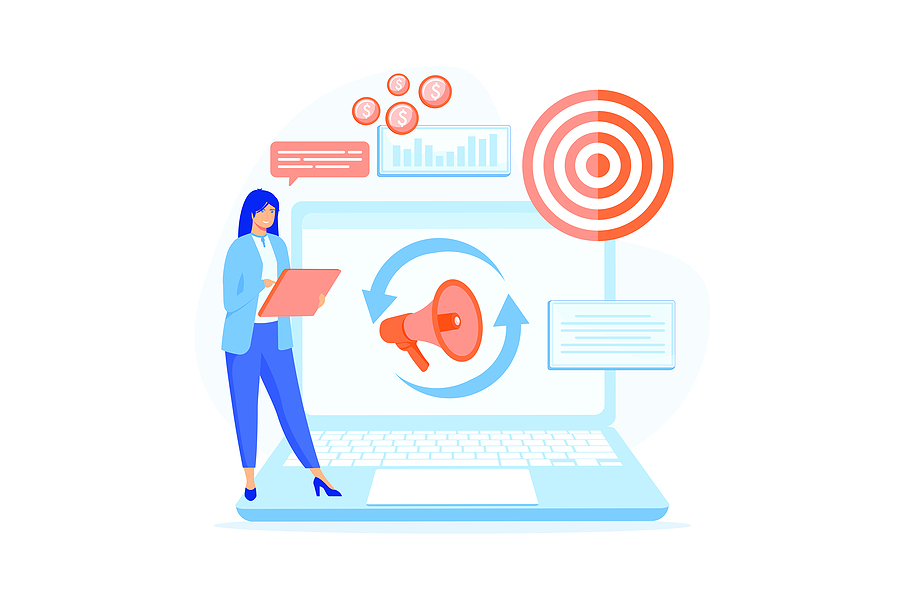Facts About Ecommerce Retargeting for 2023

Are you tired of losing prospective customers to your competitors? Want to give your sales a boost? Look no further than ecommerce retargeting. This powerful marketing strategy uses technology to serve ads to customers who have already visited your ecommerce store or have interacted with your brand online. With it, you’ll say goodbye to generic ads and hello to personalized product recommendations and special offers. You’ll increase your conversion rates and re-engage inactive customers, too. There are seemingly endless possibilities with retargeting, so it’s become a beloved tactic among online retailers in recent years.
Keep reading to learn more about how you can take your ecommerce game to the next level with this proven strategy. But first, let’s get back to basics.
What Is Ecommerce Retargeting?
Ecommerce retargeting is a marketing strategy used by online retailers to target ads to customers who have previously visited their website or interacted with their brand online. This is typically done by placing a tracking cookie on the customer’s device, which allows the retailer to collect data on the customer’s browsing behavior and use that information to serve relevant ads.
Retargeted ads can promote specific products, encourage customers to complete a purchase they abandoned in their shopping cart, personalize the shopper’s browsing experience by showing them related products or recommended items or offer them personalized discounts or other incentives to return to the website. Additionally, retargeting can be a way to re-engage customers who have not recently made a purchase by showing them targeted ads and special offers.
With so many potential uses, retargeting is a powerful tactic for any online retailer, and it has become a pillar of many brands’ digital strategy.
Ecommerce Retargeting Statistics for 2023
Prefer to see the story in numbers? We’ve got you covered.
- 97% of visitors that bounce from your website do not return. (Mailchimp)
- Retargeting reduces cart abandonment by 6.5%. (MotoCMS)
- Returning customers have a higher conversion rate of 4.5%, compared to new customers at 2.4%. (Business Insider)
- 37% of customers click a retargeted ad primarily because the featured products appeal to them. (Linear Design)
- It only takes one remarketing campaign to boost conversions by as much as 161%. (Google)
- Brands like Zendesk and Intel have cited remarketing as the key to raising their return on investment by more than 1000%. (Growth Badger)
- 70% of marketers opt for retargeting to increase brand awareness. (IAB)
There’s no question why ecommerce retargeting has staked its claim in the playbooks of online retailers. It just works. PS: Need more ecommerce retargeting stats? Don’t miss our last roundup that proves it has always been a solid strategy.
Best Ecommerce Retargeting Channels
The best channels for ecommerce retargeting are the ones that allow retailers to target specific segments of customers and deliver personalized ads and offers. This will be dependent on your business, budget and buyer personas, but some popular channels for ecommerce retargeting include:
- Display Advertising: Banner ads and other visual formats
- Search Advertising: Using targeted keywords to reach customers who are searching for specific products or services
- Social Media: Targeting customers based on demographics, interests, and browsing behavior on platforms like Facebook, Instagram, and Twitter
- Email Marketing: Using email to retarget customers who have abandoned their shopping carts or who have not made a purchase in a while
- Affiliate Marketing: Partnering with other businesses and websites to reach a wider audience
- Mobile Advertising: Targeting customers on their mobile devices with personalized offers and ads
- Video Advertising: Retargeting customers with video ads on platforms like YouTube, TikTok and Vimeo
The best channels for ecommerce retargeting will also vary depending on the specific goals of your campaign, the target audience, and the industry. It’s important to experiment with different channels and to use data to identify which channel is working the best for your ecommerce remarketing efforts.
It’s just as important to think outside the box when it comes to retargeting. To supplement these tried-and-true channels, some brands are leveraging newer technology in their retargeting endeavors for truly optimized campaigns.
AI & Ecommerce Retargeting
Ecommerce AI is all the rage these days, and plenty of online retailers are using it for retargeting. Artificial intelligence algorithms can learn and analyze customer data to help ecommerce marketers work smarter, not harder.
Personalization is just one example of a strategy that’s amplified with AI. Research has proven time and time again that personalization is a key ingredient in any marketing recipe, and retargeted ads are no different. AI can review buying and browsing behavior to create highly personalized ads and product recommendations that are tailored to individual customers. Then, AI can optimize ad placement and targeting, plus scale campaigns according to performance.
This tech can also predict which customers are most likely to make a purchase or which products will most likely be of interest to a certain shopper. With this information, retailers can target their ads most effectively. This predictive modeling is also useful for inventory management and planning, which means retailers who are retargeting are also saving money.
Finally, sellers can use AI to identify objects in images and videos and then use those objects for retargeted product ads.
ABM & Ecommerce Retargeting
Another tool that works wonders for ecommerce retargeting, Roll Works offers account-based marketing (AMB) and account-based advertising (ABA) for companies looking to create personalized multi-channel campaigns. In other words, the platform lets retailers identify, target, and engage with shoppers using the messaging that will resonate with them best. You can create ads for all the channels we listed above and then measure the results, plus integrate with your other marketing automation and CRM tools to see which accounts (shoppers) are engaging — so you can serve relevant ads to them later.
Ecommerce sellers are using services like Roll Works and other ABM platforms to drive engagement and sales. In practice, it looks like how other sellers are using AI:
- Audience targeting, separating shoppers into categories based on demographics, interests, browsing behavior, and purchase history
- Customized messaging and ads that are tailored to specific customer segments and that align with their interests and needs
- Ad optimization, to test and optimize ads for maximum engagement and conversion rates
- Cross-device targeting, targeting customers across multiple devices, such as desktop, mobile, and tablet, to ensure that their ads reach potential customers wherever they’re browsing
- Retargeting customers who have previously interacted with their brand or visited their website, by showing them relevant ads and special offers.
- Attribution via detailed analytics and insights, which brands can use to measure the effectiveness of their advertising campaigns and make data-driven decisions to improve their performance
- Automation, which allows online retailers to scale their advertising efforts more efficiently and cost-effectively
Helps Optimize Inventory Levels
Predictive analytics tools are a type of ecommerce AI that use data and machine learning algorithms to forecast future outcomes and trends — particularly demand for products and optimized inventory levels.
By analyzing past sales data, customer demographics, and external factors like weather and economic conditions, predictive analytics tools can help businesses make informed decisions about how much of a particular product to stock. They avoid overstocking, which often results in excess inventory and increased storage costs, as well as understocking, which means lost sales and customer dissatisfaction, so using AI is a no-brainer.
Predictive analytics tools can also be used to identify trends and patterns in customer behavior, which can help businesses to make more informed decisions about marketing and sales strategies. For example, a business may use predictive analytics to identify the most effective times to run promotions or determine when to target specific customer segments with personalized recommendations.
Why Your Online Store Should Be Retargeting
Let’s face the facts: Most shoppers are going to bounce from your brand’s website. You can either shake your fists at the unfairness of it, or you can try to recapture as many of those not-quite-customers as possible. Retargeting gives you the power to stay top of mind, showcase how your products will solve consumers’ unique problems and win back the ones who got away. What’s not to love?

Share On:








